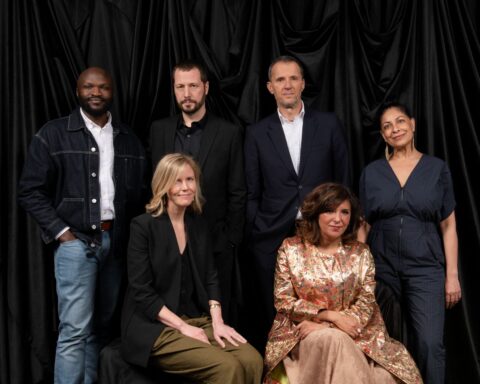Trick or Treaty?
Canada, 85 min.
Written and directed by Alanis Obomsawin
Programme: Masters (World Premiere)
Canadian filmmaker Alanis Obomsawin finally gets an upgrade to TIFF’s prestigious Masters programme with Trick or Treaty?. This provocative documentary is a fitting film with which to place Obomsawin alongside the likes of Jean-Luc Godard, Hong Sang-soo, and recent Cannes champion Nuri Bilge Ceylan, for Trick or Treaty? truly proves Obomsawin a master of the art form. Trick or Treaty? is one of her best films yet.
Obomsawin returns to the Festival after last year’s Hi-ho Mistahey!, a runner-up for the People’s Choice Award for Documentary, and she once again returns to pivotal issues facing First Nations persons in contemporary Canada. Obomsawin looks to the heart of the ongoing divides in the Canadian state that continue to propagate the fallacy that First Nations communities house second-class citizens. The film smartly opens with a conference at which an audience member asks if it is appropriate for tribal elders to remove a journalist from a reserve when she starts asking questions. The Chief on the receiving end of the question smartly turns the query back on the audience and asks if it is appropriate for countless murders of First Nations women to go underreported, or if reports of a Human Rights Crisis amongst First Nations communities are equally appropriate. These topical questions, articulated passionately throughout Trick or Treaty?, exemplify the fundamental gaps in perception and language that allow inequalities to continue today.
Trick or Treaty? takes a two-pronged approach to the poverty facing First Nations communities in Canada by depicting the recent events of the Idle No More movement crosscut with an in-depth interrogation of the 1905 agreement Treaty 9, in which First Nations communities signed over their power and their land to the Crown. The historical precedent for Idle No More is troubling, since the movement, as Obomsawin notes, began as a response to the measures of omnibus Bill C-45, which stripped First Nations communities of several rights including access to resources and water. The treaty, as Attawapiskat Chief and Idle No More leader Theresa Spence notes, was really about sharing, rather than control.
Obomsawin interviews a roster of active voices, both from within and from the outside of the First Nations community, to demonstrate how a fundamental difference exists between how Treaty 9 was written and how it was explained to the people who signed over their rights under the misconception that their signature would bring peace and prosperity. By crosscutting the consequences of Treaty 9 with the growing power of Idle No More, Trick or Treaty? provocatively and defiantly parallels the Canadian government’s indifference to First Nations Canadians then and now.
What differs in the two threads of Trick or Treaty?, though, is powerful chorus for change in the present-day narrative. Trick or Treaty? takes in equal measure the activist efforts to correct the wrongs inflicted on First Nations communities. Obomsawin’s compelling footage of the Idle No More protestors gathering on Parliament Hill and trudging through the snowy streets of Ottawa builds a powerful communal voice and call for action. The conviction of Obomsawin’s methodology, plus the palpable undercurrent of anger that makes the film so provocatively hot-blooded, argue that the concerns of the First Nations persons are ultimately the concerns of all Canadians.
Obomsawin’s articulate, soft-spoken voiceover delivers the necessary facts and draws conclusions that smartly further the voices in the interviews. Trick or Treaty? confronts this pressing subject with Obomsawin’s signature recipe of passion and anger. As the film cuts back and forth from the injustices of the past to those of the present, Trick or Treaty? implores the audience to wake up. Obomsawin’s intuitive reflection of such immediate events is remarkable and the urgency of the film is palpable.
Read Kiva Reardon’s new profile of Alanis Obomsawin here.
Trick or Treaty? screens:
Friday, Sept. 5 at 2:30 PM at TIFF Bell Lightbox 3
Saturday, Sept. 6 at 9:00 AM at AGO Jackman Hall











